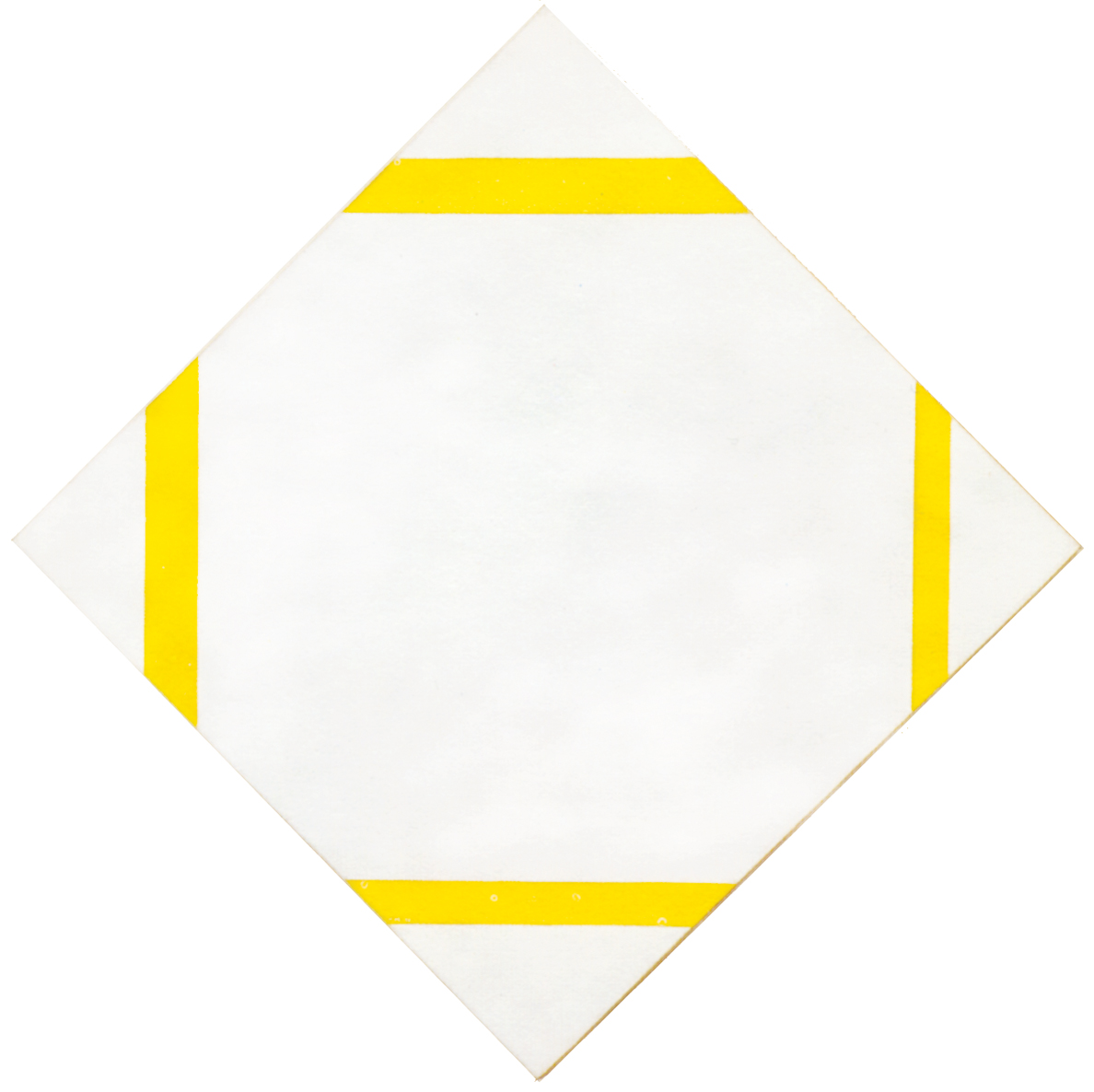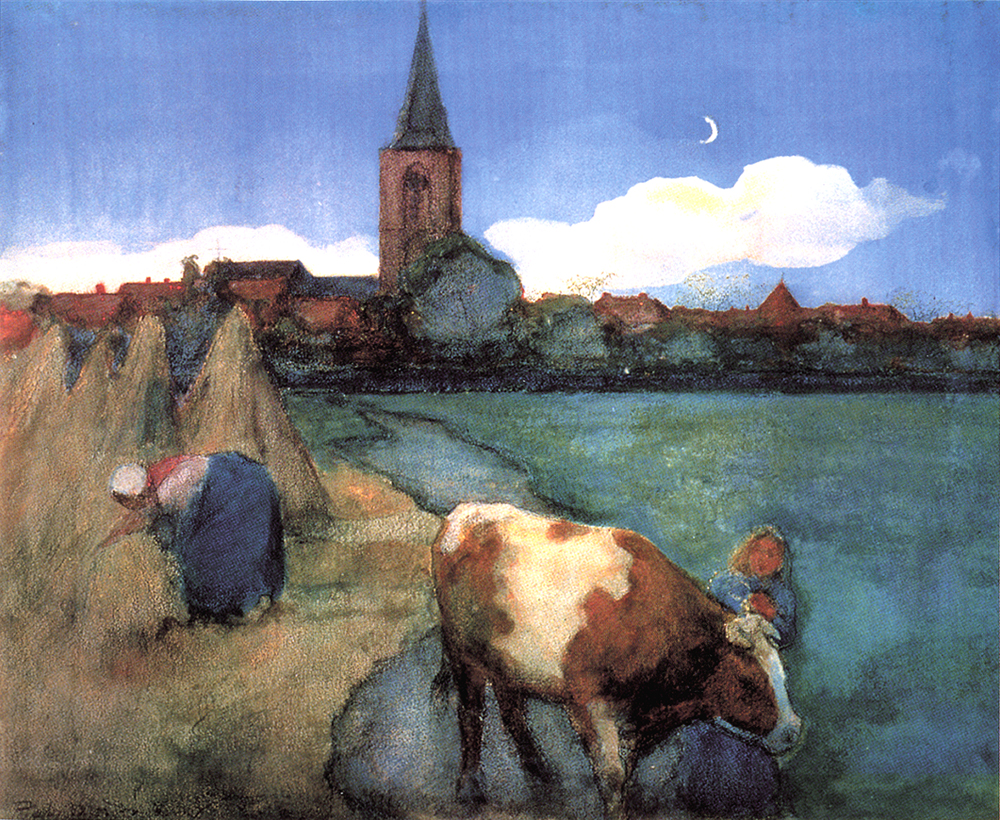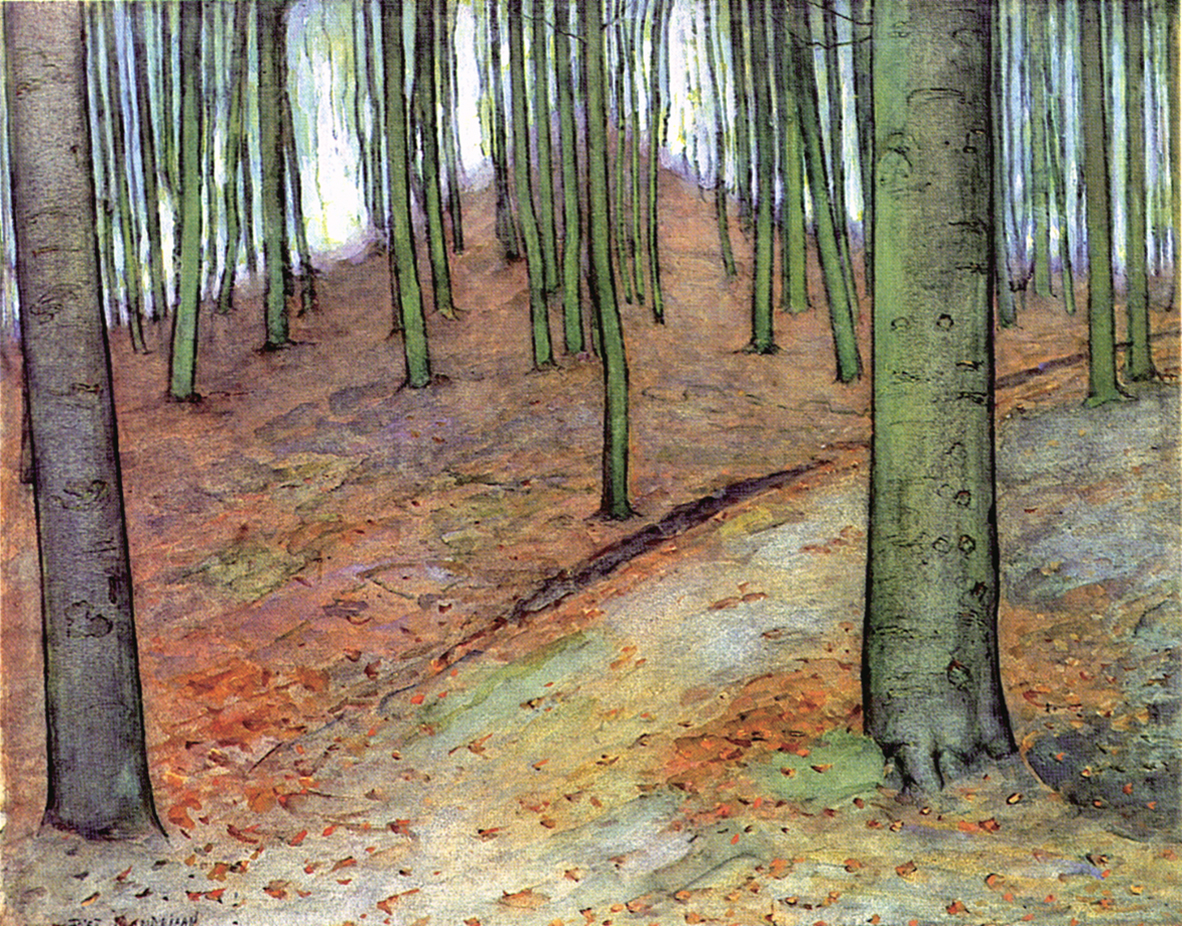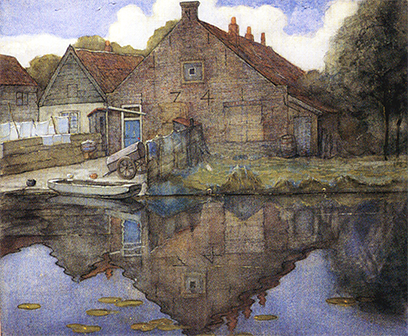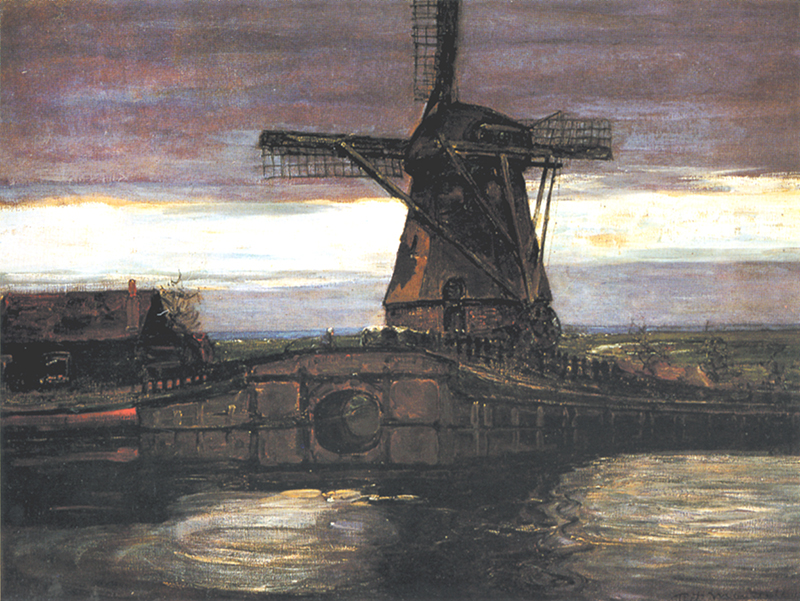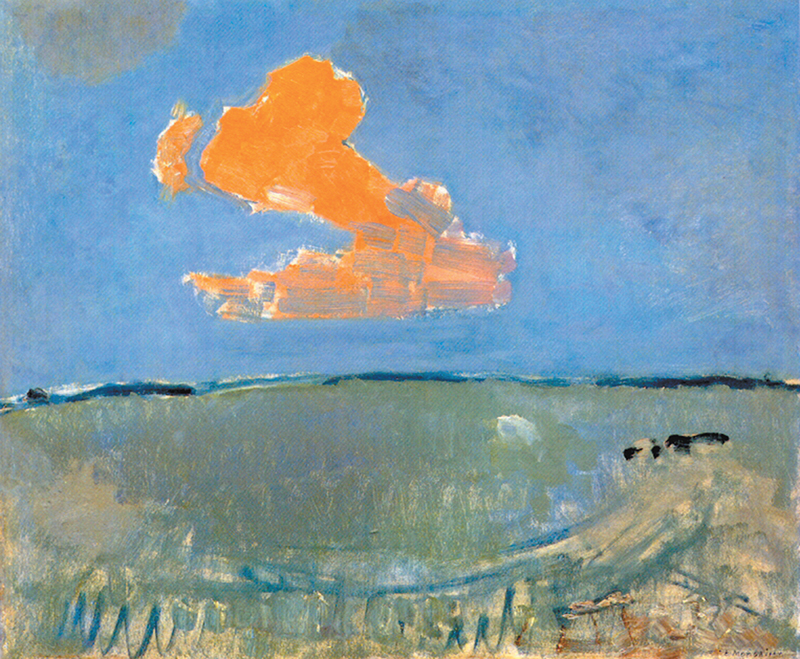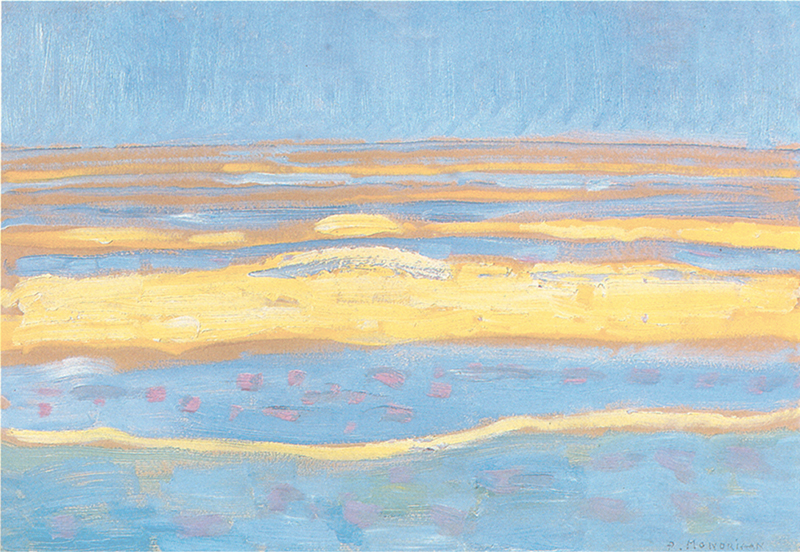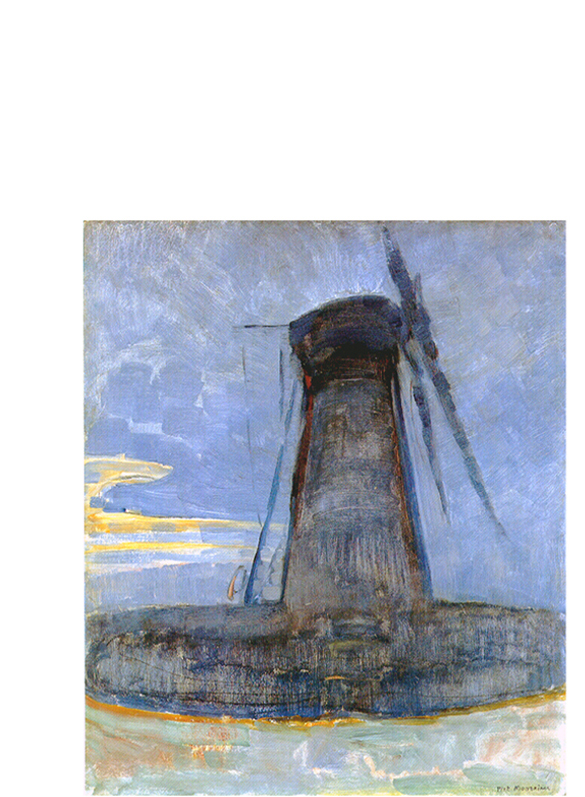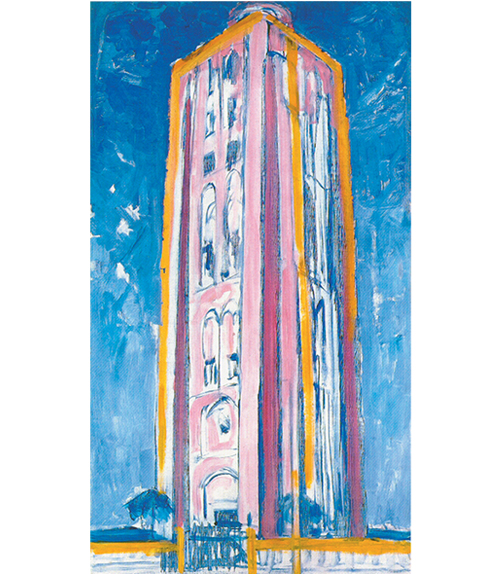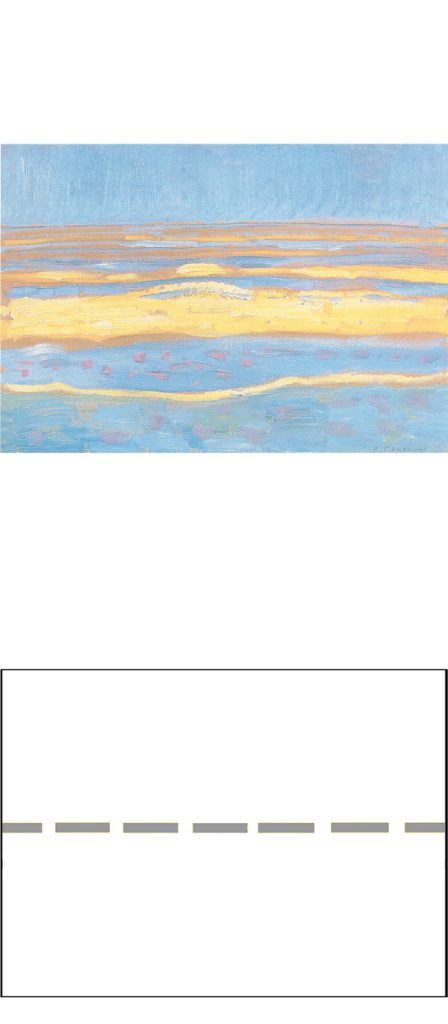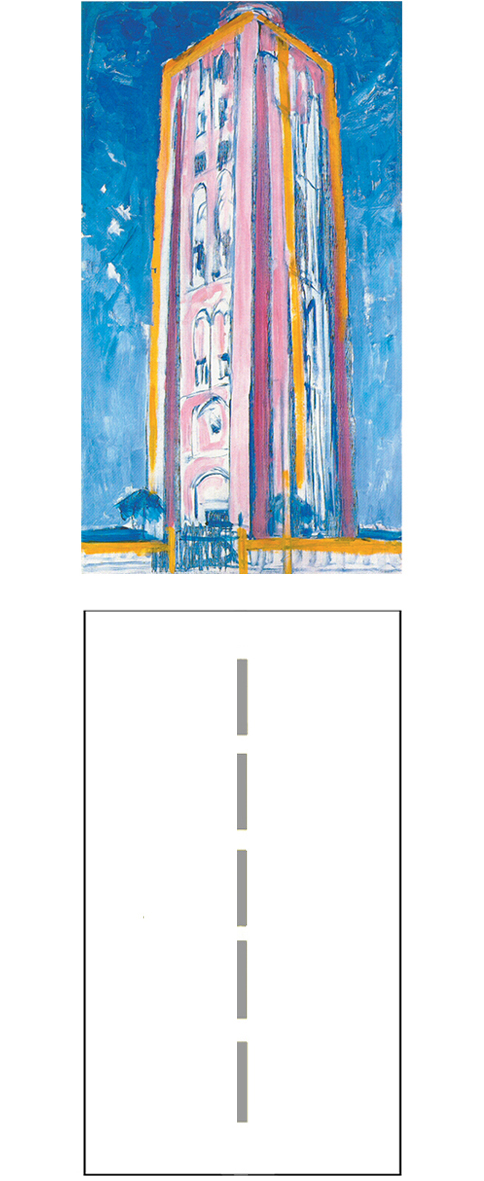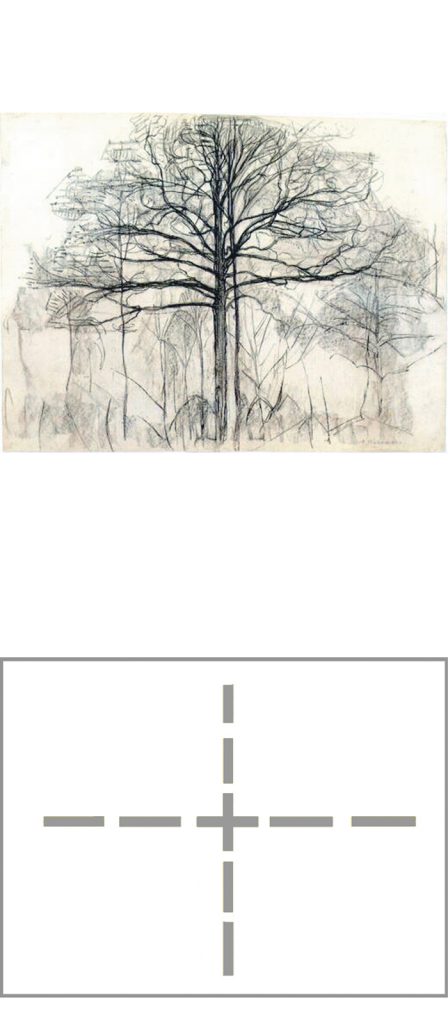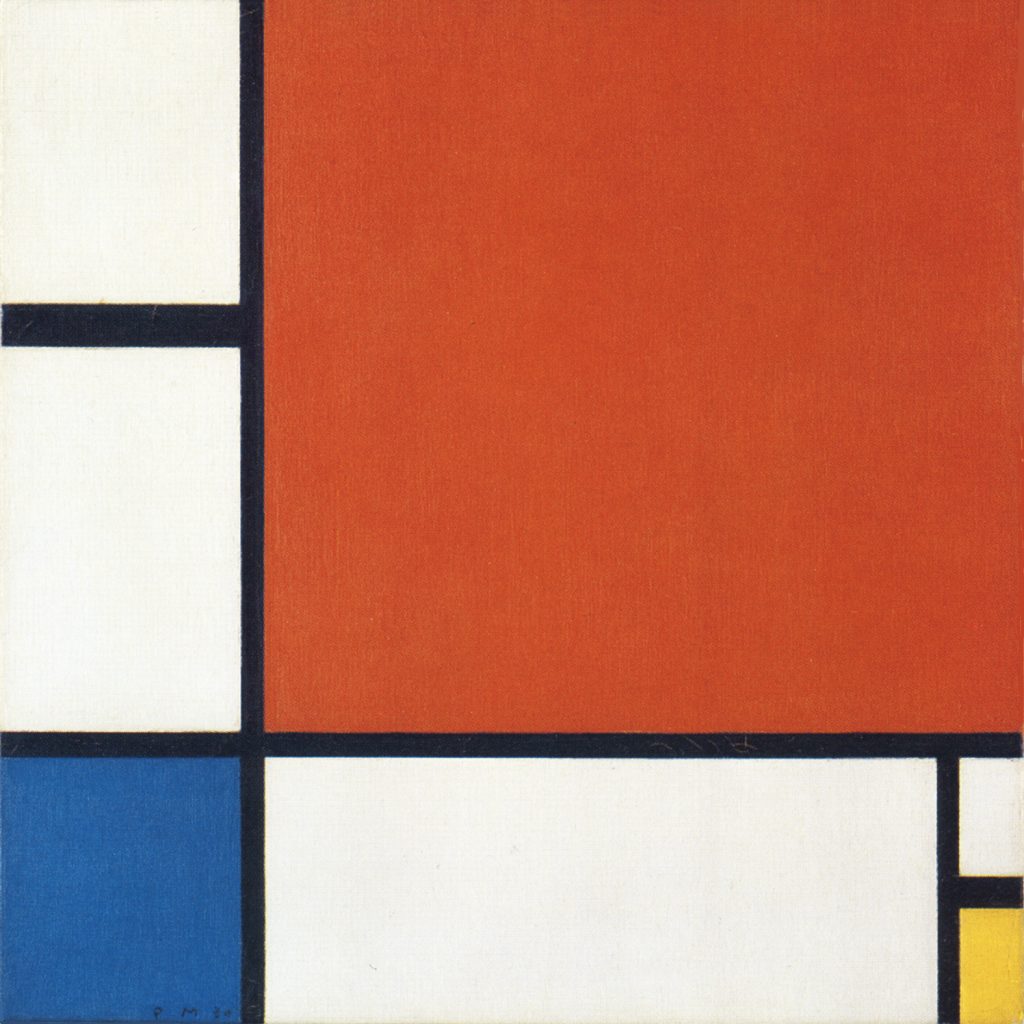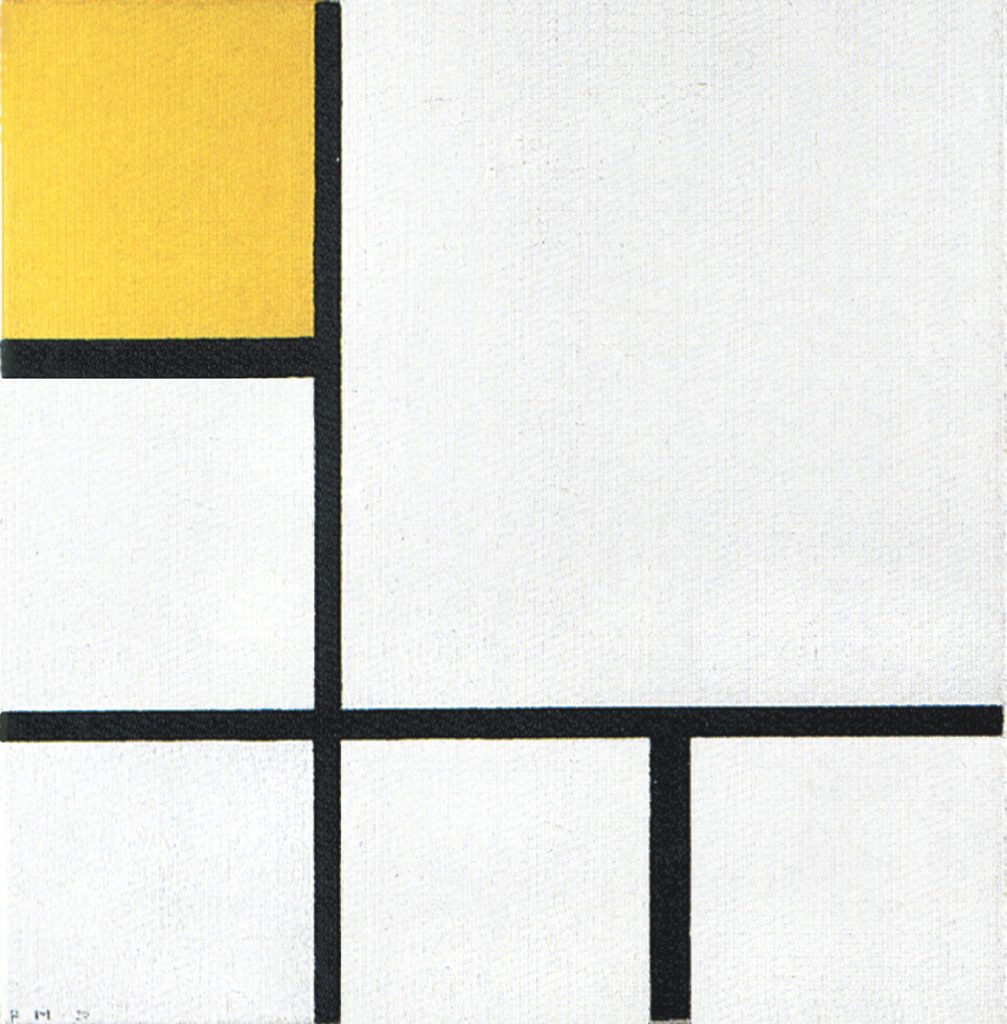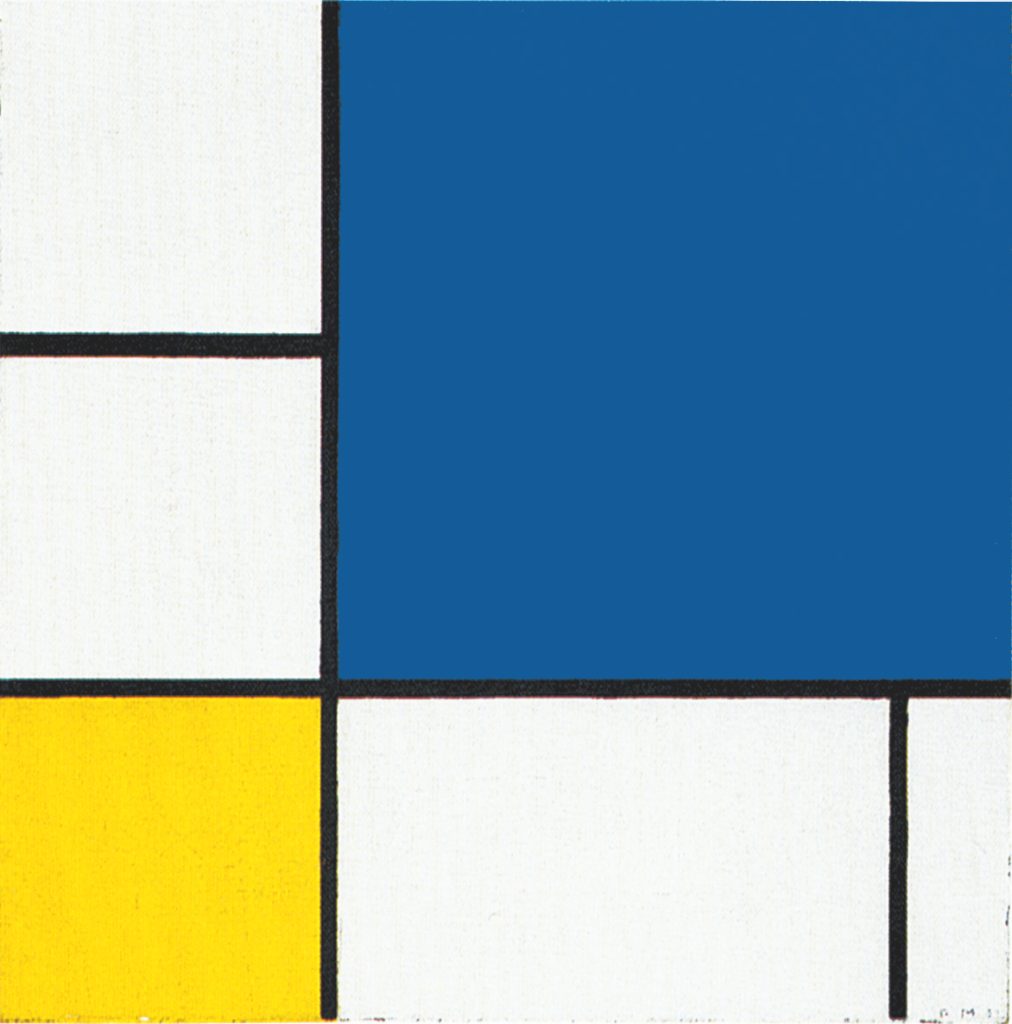How does Mondrian come to a space based on a relationship between horizontal and vertical straight lines?
The artist begins to paint in accordance with the tested canons of the naturalistic painting, otherwise called figurative:
Around 1907, the earlier landscapes of the naturalist phase are stripped of trees, houses, and any sign of human presence to express the infinite extension of an unspoiled nature:
As art historian H. L. C. Jaffé observes, “His confrontation in 1909 with the infinity of nature coincides with his joining the Netherlands Theosophical Society, where man’s union with the infinitude of the universe was a central problem.”
At the same time the painter’s attention turns to constructions such as mills or lighthouses:
In the compositions that expand horizontally, the gaze is opened to the infinite dimension of nature while in the vertical architectures everything is concentrated into a finite space in which human beings think, design and build to rise from a primitive condition of nature.
Mondrian wrote that the horizontal represents the Natural while the vertical evokes the Spiritual.
The vertical elevation expresses mankind’s atavistic propensity to imagine a spiritual dimension extending toward the ethereal space of the heavens rather than remaining bound to the everyday matter spread out horizontally before our eyes.
The Natural and the Spiritual
The artist ascribed to the horizontal the value of everything that can be defined as the “natural” not only in the sense of natural landscape but also as anything that before our eyes and within ourselves constantly changes. In the vertical the artist instead saw a symbol of the “spiritual” that is, of the all-human propensity to seek stability, constancy, unity. Our lives consist of this dialectic between mutable and constant, multiplicity and unity, instincts and reason, that is to say, between opposite drives. How to express opposite drives in the bi-dimensional space of painting? A way is to generate a dynamic interaction between horizontal and vertical directions.
While an horizontal compositional space prevails in the landscapes and a vertical layout in the architectures, the opposite directions merge together in the figure of a bare tree:
In the structure of a tree Mondrian evokes a synthesis of horizontal and vertical, that is, of what the artist considers as symbols of the natural and the spiritual.
The abstract compositions of the following years formed by horizontal and vertical lines are already present in the figure of a tree although still in a form veiled by appearances.
In many abstract works we shall see a variety of squares in which horizontal and vertical reach a dynamic balance among fully asymmetric compositions. Translating geometry into existential terms we shall see an on-going dialogue between opposite drives such as the Natural or the instincts and the Spiritual or the reason.
Copyright 1989 – 2024 Michael (Michele) Sciam All Rights Reserved More
